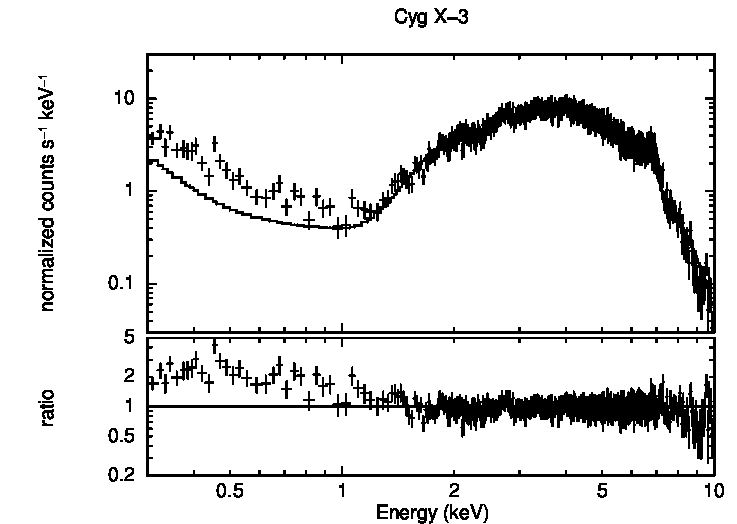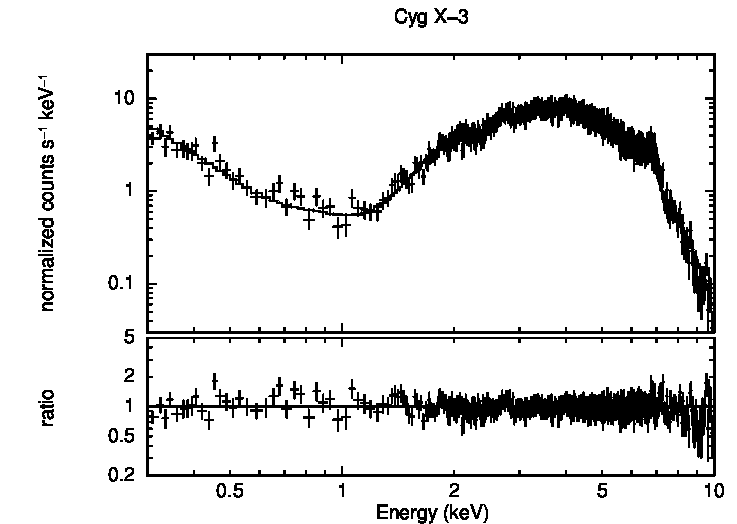- Home
- About
- Support
- Data Access
- Data Analysis
- Data Products
- Publications
-
Links
Databases NED Simbad GCN circulars archive GRB data table Software & Tools Swift Software (HEASoft) Xanadu WebPIMMS Institutional Swift Sites GSFC PSU OAB SSDC MSSL University of Leicester
Position-dependent WT RMFs
Windowed Timing Mode operates by accumulating 10 rows at a time in the serial register, before the latter is read out (see the XRT modes page). Multi-pixel events sometimes cross these 10-row binning boundaries and become split during the readout process, which affects the redistribution tail seen in this mode.
The default WT RMFs were created assuming a uniform intensity distribution for the source of X-rays incident on the CCD. In order to model point source behaviour better, WT RMFs have also been produced based on the XRT point source incident X-ray distribution, assuming the centre of the source lies on, 2.5 pixels away from, or 5 pixels away from the 10-row boundary. A source positioned on the boundary will undergo the maximum amount of 10-row binning induced event splitting (ie the strongest redistribution tail will be observed), while a source centred 5 pixels away (the middle of the 10 row binning) will show the weakest redistribution. More information is given about these RMFs in the release note.
Unfortunately, the spacecraft attitude information is not known accurately enough to pin-point exactly where on the CCD the centre of a point source will lie in WT mode (at the pixel level), so it is not possible to predict which position dependant RMF to use. When fitting a WT spectrum, the advice is to try all 3 possible locations (distinguished by psf1, psf2 and psf3 in the file name) and use the one which produces the best statistical fit - i.e. the lowest C-stat.
Note that these files are both epoch- and position-dependent, although the switch between epochs is approximate; so, for observations close to an epoch boundary, RMFs from the following/preceding epoch may show a slight improvement.
These RMFs will be most useful when fitting a non-piled-up spectrum from a single snapshot, with NH > a few 1021 cm-2. Spectra summed over multiple snapshots will be less affected, since the centre of the source is likely to move with respect to the 10-row boundary between snapshots. Similarly, if a source is piled-up (or positioned directly over the bad columns), then the position dependent files become less of an improvement, since the core of the PSF will have been excised, so the fraction of events falling at a given position is no longer biased towards the core of the PSF.
Note that ARFs are independent of the RMF used, so do not need to be recreated for each position-dependent RMF. However, each time an RMF is read into XSPEC, the corresponding ARF needs to be read in again (otherwise the normaisation/flux will be wildly wrong!).
A summary of the position-dependent RMFs is available.


